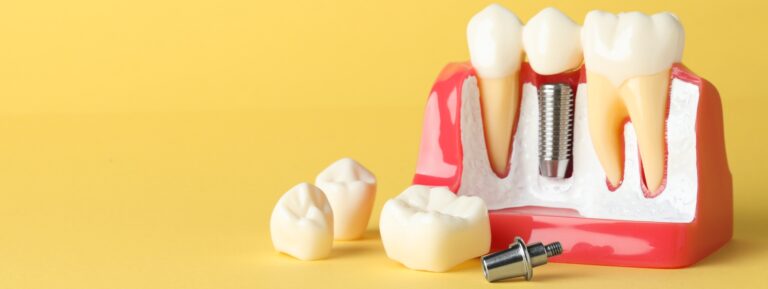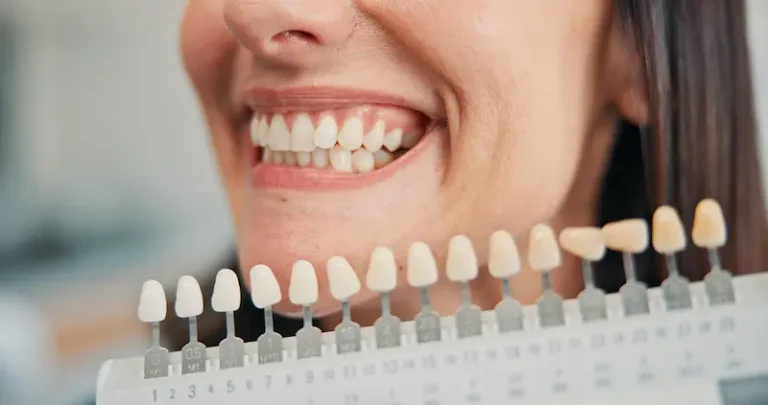Cavities are one of the most common dental problems that affect people of all ages, including children, teens, and adults. As a parent, it’s important to understand how cavities form, how they can be prevented, and how you can protect your family’s oral health. At The Foleck Center, we believe that education is key to helping patients in Virginia Beach, Norfolk, Hampton Kecoughtan, and Hampton Coliseum maintain healthy smiles for life.
Whether you’re a first-time parent or an experienced one, let’s walk through the process of how cavities develop, and explore tips for deterring them.
What Are Cavities?
A cavity is a permanently damaged area of a tooth that forms when bacteria-produced acid in the mouth erodes the tooth’s enamel (its hard outer surface). Over time, this damage can progress and lead to the formation of holes or “cavities” in the affected tooth. Without treatment, cavities can lead to toothaches, infections, and more serious dental issues that could require extensive treatment like root canals or extractions.
Cavities typically begin small and painless, which is why they can go unnoticed until they’ve caused significant damage. Early detection and prevention are essential to maintaining good oral health.
How Cavities Form: A 3-Step Process
1. Plaque Formation
Plaque is a sticky film that forms on your teeth and gums throughout the day. It’s made up of bacteria that feed on food particles in your mouth, especially sugars and starches. As those particles are broken down, acid is formed.
2. Acid Attack
This acid can begin to weaken the enamel on your teeth. Since enamel is the first line of defense against tooth decay, its erosion allows bacteria and acid to reach the softer layers of your teeth called dentin, which is more susceptible to decay.
3. Decay Spreads
Once a tooth’s enamel is compromised, bacteria begin to infiltrate deeper inside. This can result in the formation of cavities. The progression from enamel erosion to a full cavity is often gradual, but once it gets deep enough, the results can include pain, sensitivity, and more serious dental issues.
What Factors Contribute to How Cavities Form?
Several factors can increase the risk of cavities, including:
1. Diet and Sugar Consumption
Eating sugary or starchy foods and drinks — such as candy, soda, and even fruit juices — can contribute to the formation of cavities. Bacteria in your mouth thrive on sugars, so the more often you consume sugary foods and drinks, the more your enamel is exposed to acid attacks.
2. Poor Oral Hygiene Habits
Not brushing and flossing regularly allows plaque to build up, which increases concentrations of harmful bacteria in your mouth. If you don’t clean your teeth regularly, that plaque can harden into tartar, which can only be removed by a dentist or hygienist.
3. Dry Mouth
Saliva plays a crucial role in neutralizing acids in the mouth and washing away food particles. If you suffer from dry mouth (due to medications, certain medical conditions, or dehydration), your mouth may not be able to remove food particles and bacteria effectively.
4. Tooth Positioning
Teeth that are misaligned or have deep grooves and pits are more likely to trap food particles and plaque. This makes it harder for you to clean them properly, and easier for bacteria to fester.
5. Lack of Fluoride
Fluoride is a mineral that strengthens tooth enamel and protects against decay. If you don’t have access to fluoride in your water, or you don’t use fluoride toothpaste, your teeth may not be as resistant to cavities.
How to Prevent Cavities: Tips for Families in Virginia Beach
Preventing cavities doesn’t have to be complicated. By following these simple tips, you can protect your family’s teeth and ensure that they stay healthy for years to come.
1. Brush Twice a Day With Fluoride Toothpaste
Brushing your teeth at least twice a day is one of the best actions you can take to reduce the risk of cavities. Use fluoride toothpaste so that you remineralize your tooth enamel. Be sure to brush for at least two minutes, reaching all surfaces of each tooth. Please note that brushing should be gentle — otherwise, you’ll inadvertently damage the enamel you’re trying to protect.
For younger children, it’s essential to supervise brushing until they are old enough to do it themselves (usually once they turn 7 or 8).
2. Floss Daily
Flossing removes plaque and food particles from between your teeth where your toothbrush might not reach. Flossing once a day, ideally before bed, is crucial to maintaining healthy teeth and gums. Children should begin flossing as soon as their teeth start to touch each other.
3. Limit Sugary Snacks and Drinks
Limit the number of sugary snacks and drinks your family consumes. Instead, encourage healthier alternatives like fruits, vegetables, and cheese.
4. Drink Water Throughout the Day
Water is essential for oral health. It washes away food and bacteria and keeps your mouth moist, which aids in neutralizing acids. Drinking water after meals, especially sugary or acidic foods, can protect your teeth from the harmful effects of plaque and bacteria.
5. Visit Your Dentist Regularly
Routine dental visits can catch cavities early and stop them before they become bigger problems. At The Foleck Center, we recommend visiting your dentist every six months for regular cleanings. During these visits, your dentist will check for cavities, clean your teeth, and provide fluoride treatments if necessary.
6. Consider Dental Sealants for Children
Dental sealants are a protective coating applied to the chewing surfaces of your back teeth, which are prone to cavities due to their deep grooves. Sealants prevent food and bacteria from getting trapped in these grooves, and are particularly useful for children who may have difficulty reaching all areas of their teeth when brushing.
7. Use Fluoride Treatments
If your family’s drinking water does not contain fluoride, or if your child is at a higher risk for cavities, fluoride treatments may be recommended. These treatments strengthen the enamel and provide added protection against decay.
The Foleck Center: Your Partner in Cavity Prevention
Good oral health is important, and understanding how cavities form is the first step to avoiding them. But when it comes to peace of mind, our team is here to provide preventive care, education, and treatment to ensure that your family’s teeth stay healthy and cavity-free. Whether you need a routine checkup, a fluoride treatment, or help with developing healthy oral habits, we’re ready to assist you!
We make it easy for families across Virginia Beach, Norfolk, Hampton Kecoughtan, and Hampton Coliseum to receive quality dental care. If you want to keep your family’s smiles bright and healthy, schedule a dental checkup with us today! 757-979-6012




